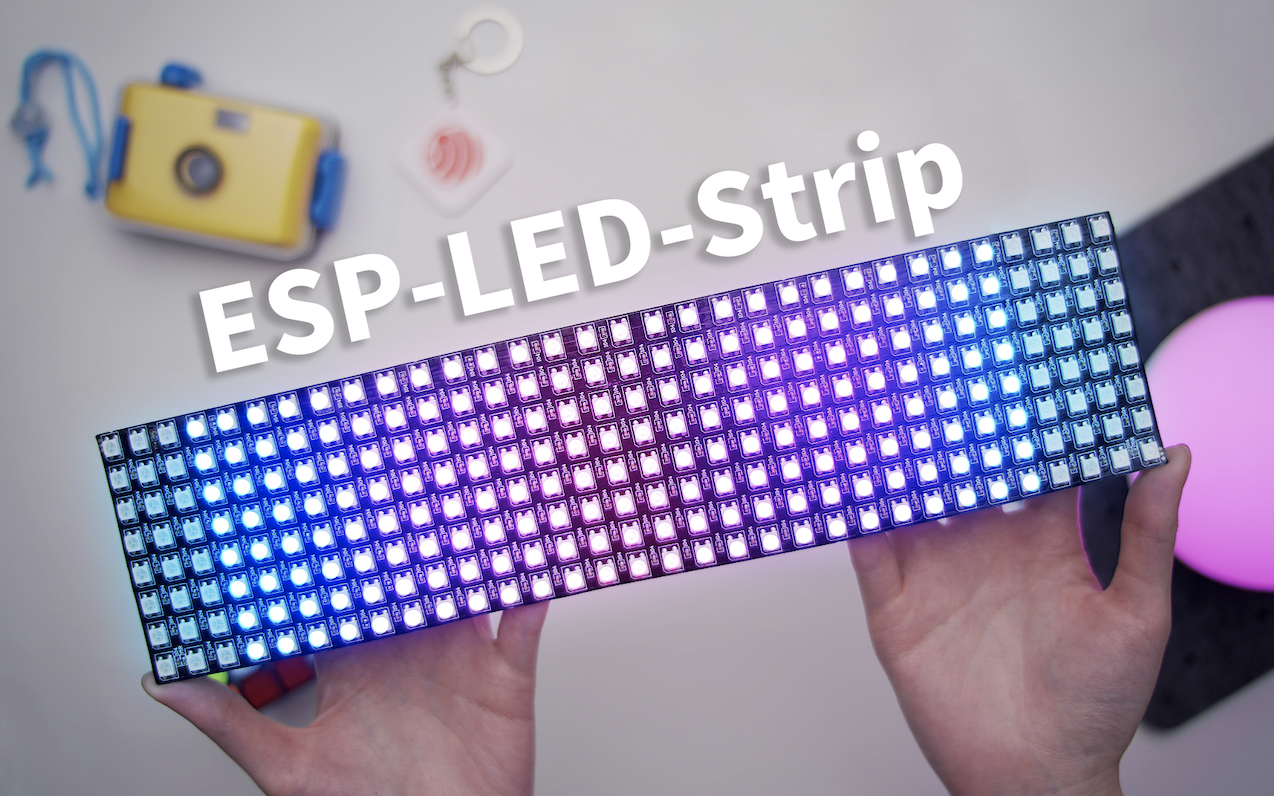- Home
- Hardware
- SDKs
- Cloud
- Solutions
- Support
- Ecosystem
- Company
- Contact
news
ESP-LED-Strip: Espressif’s Smart Light-Strip
Shanghai, China
Jan 28, 2022
ESP-LED-Strip flashes according to the beat and volume of the music from the user’s surroundings.
ESP-LED-Strip is Espressif’s smart light-strip, which can pick up and analyze different types of music from the user’s surroundings, so that the light-strip flashes according to the beat and volume of the music.
ESP-LED-Strip supports multiple control modes, custom-made settings, and adjustable lighting effects. It can be used in different scenarios, ranging from mood lighting to indoor decorative lights or various lighting effects for art projects and on-stage performances.

ESP-LED-Strip is based on ESP32-C3, which is Espressif’s ultra-low-power and low-cost SoC supporting Wi-Fi and Bluetooth 5 (LE). The chip has a RISC-V 32-bit single-core processor, with a clock frequency of up to 160 MHz. It has a 400 KB SRAM, and 22 programmable GPIOs. All in all, ESP32-C3 achieves a great balance between computing performance, security, storage capacity and cost. It is ideal for common IoT scenarios, especially smart-lighting.
The ESP32-C3 series includes variants with SiP flash and interfaces to which external flash can be connected for maximum flexibility.

To implement Espressif’s smart-strip solution, you basically need an ESP32-C3 and a microphone. Then, the implementation process is as follows:
- First, connect an analog microphone through the analog-to-digital converter (ADC) and record an audio sample, preferably a tune or a short piece of music.
- Then, process the audio sample by using noise reduction and dynamic gain algorithms.
- After that, analyze the frequency and volume of the audio sample by using algorithms like the Fast Fourier Transform.
- Finally, adjust the brightness, color, and number of LEDs to be flashing, according to the frequency and volume of your recorded audio sample.

Additional Combinations and Capabilities
Espressif’s ESP-LED-Strip can be built around other Espressif SoCs, such as ESP32-S3, which supports AI acceleration, high-performance audio front-end algorithms, and wake-word engines, without an external digital signal processor (DSP). Furthermore, the ESP-LED-strip that is built around ESP32-S3 supports offline and online voice assistants, as well.
Additionally, you can use ESP-Skainet to configure up to 200 offline speech commands for ESP-LED-Strip. Moreover, Espressif’s Alexa-for-IoT SDK allows you to integrate Alexa functions into your smart light-strip, for online voice control. With Espressif’s AIoT Cloud platform, ESP RainMaker, you can use an app to control ESP-LED-Strip, customize speech commands for it, and install OTA updates. Finally, ESP-LED-Strip can be controlled by using either infrared light signals or buttons.
All things considered, the ESP32-C3-powered ESP-LED-Strip offers a cost-effective, flexible and easy-to-use smart-lighting solution. It is applicable to different use cases ranging from mood lighting to indoor decorative lights or artistic projects, while it is also ideal for upgrading any existing smart-lighting solutions.
ESP32-C3 is compatible with various public Cloud platforms, providing corresponding SDKs with which users can quickly build smart-lighting and other IoT equipment. ESP32-C3 also supports Matter, which is an upcoming industry-unifying, IP-based connectivity protocol. Thus, users can build smart-lighting gadgets that can be seamlessly integrated into different ecosystems, with minimal effort.
If you’d like to learn more about ESP-LED-Strip, or if you have any questions about it, please contact our customer support team.


 LinkedIn
LinkedIn 微信
微信
 Twitter
Twitter Facebook
Facebook
